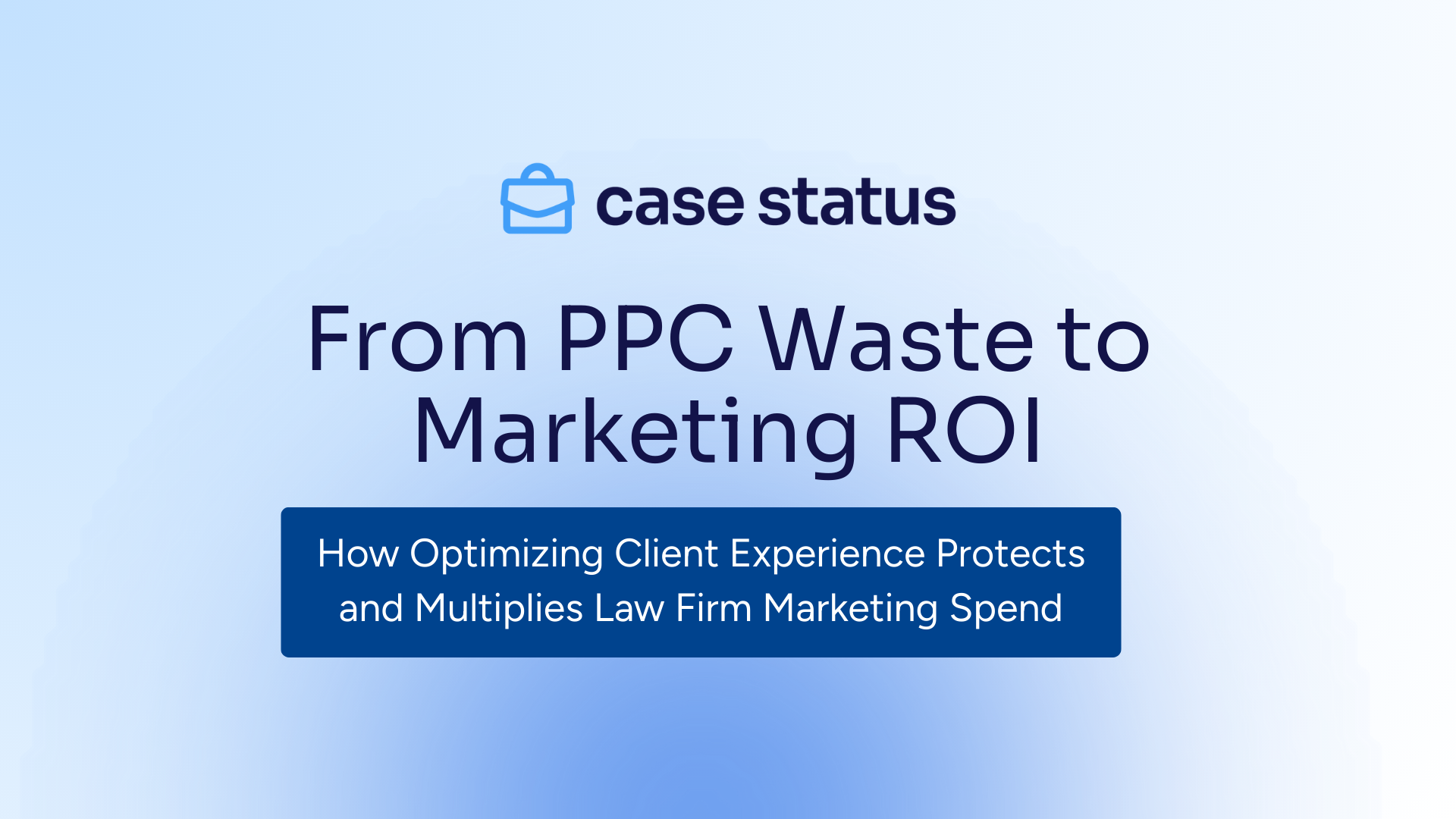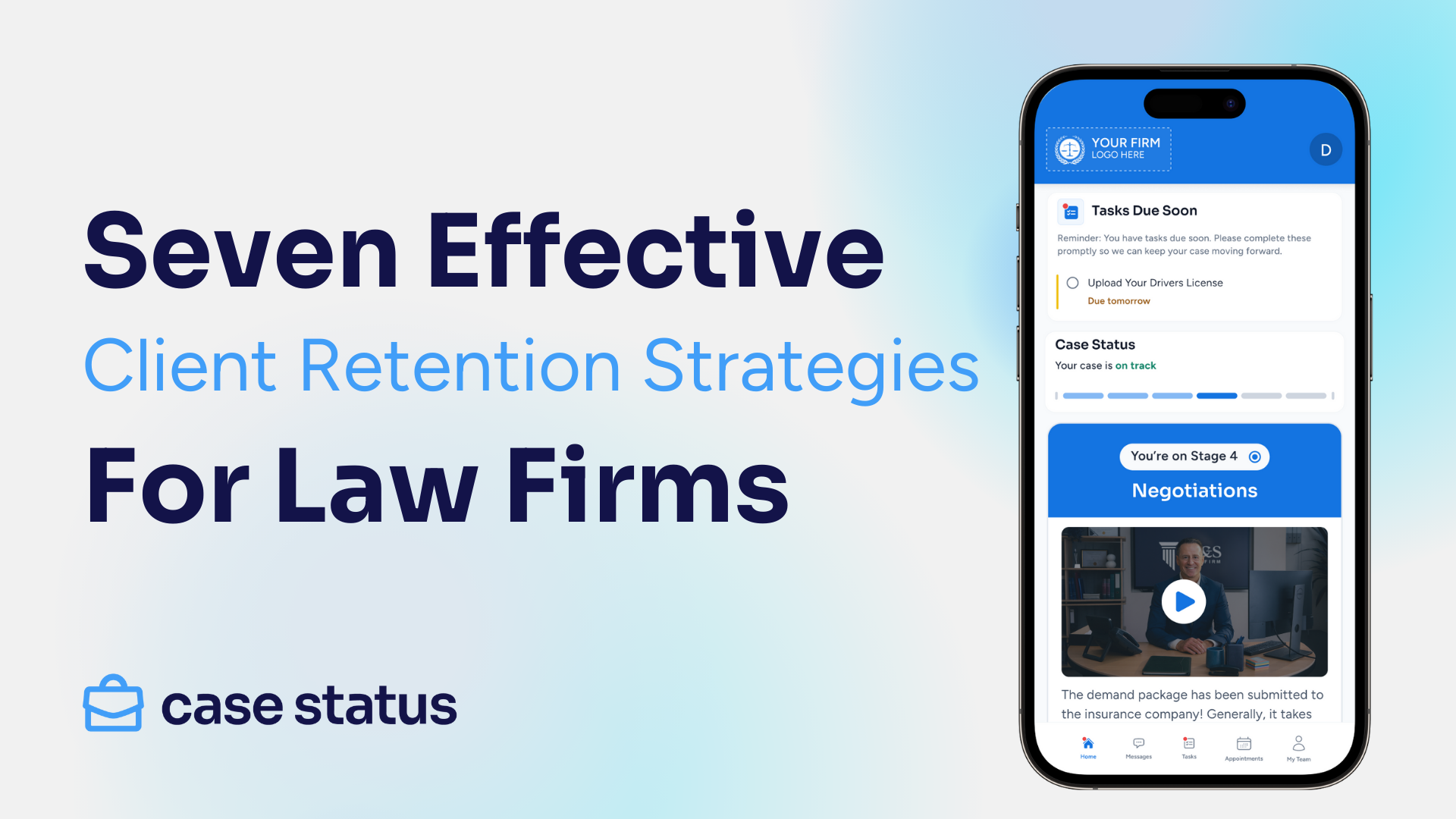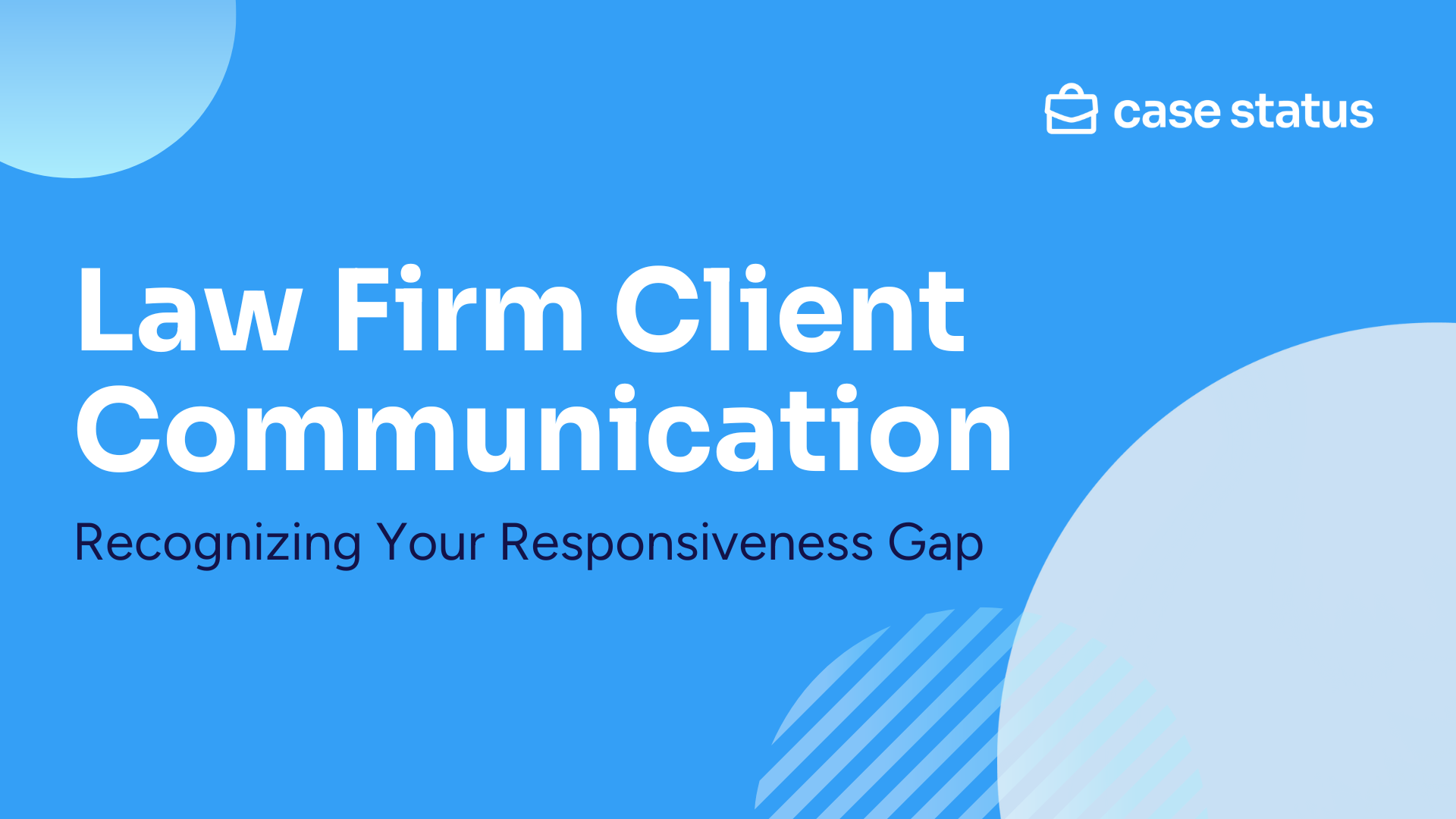.png)
For your law firm to succeed, it needs to focus on legal operations management, which covers many of the business, strategic, and administrative tasks of a law firm or legal department. Depending on the size of your firm, a legal operations team may work on:
- Vendor management
- Strategic planning
- Financial management
- KPI reporting and analysis
- Technology adoption
- Process and systems creation
- Hiring and staff retention planning
Legal operations management is overlooked by many small and medium law firms, which see it as something only large firms need. However, legal operations can benefit companies of all sizes, especially in terms of helping them become more efficient and agile through the adoption of AI and automation that's reimagining how law firms are operated today.
Explore Further: Discover scalable strategies to make managing a law firm easier and more efficient
KPIs That All Law Firms Should Track
Legal operations management plays a big role in developing and tracking key performance indicators (KPIs), such as case velocity, profit per case, gross margin, and net promoter score (NPS). By focusing on these KPIs, your law firm will be better managed and more likely to scale.
Case Velocity
Case velocity is how long clients take to move through your sales funnel. Your legal operations calculate case velocity by multiplying your win rate — the percentage of potential cases turned into signed cases — by your total case opportunities and your average fees. Then that figure is divided by the average time it takes to reach a settlement or verdict.
Your case velocity is an essential KPI for identifying opportunities for increasing the efficiency of your case handling. Recent data shows a direct correlation between faster case resolution times and improved client satisfaction.
Case velocity can be improved in a number of ways. For example, you can use AI tools to summarize case documents and respond to client inquiries while still maintaining a personable tone that fits your firm.
Doing so enables you to spend less time on client communications, which in turn helps you spend more time handling the legal matters of case work rather than keeping clients updated through manual communication channels.
Total Case Time and Profit Per Case
Total case time, or case resolution time, is a metric of how much time your firm is spending on an individual case. It is calculated from when a new client is signed on to when their case is resolved and funds are dispersed. Only 25% of firms track total case time, despite it being one of the most fundamental KPIs.
Total case time is essential for identifying bottlenecks and opportunities for improvements in your case handling process.
By knowing how long your cases take on average, you can identify individual cases that are taking longer than normal and whether there are unique aspects of these cases that make them less efficient.
From there, you can focus on reducing total case time, which can improve your case turnover rate and increase profit per case, ultimately resulting in improved client satisfaction.
Your legal operations management can track total case time by identifying when a client is first signed on until their case is closed. For the best results, you should aim to identify important milestones between these two points, such as the beginning of negotiations and verdict dates.
The more detailed your data, the easier it will be to spot opportunities across cases to improve efficiency, such as by implementing automated tools.
Gross Margin
Gross margin measures your law firm's profitability by calculating the difference between total revenue from cases and the direct costs associated with handling those cases, expressed as a percentage of total revenue. Direct costs typically include attorney fees, case-specific research expenses, expert witness costs, and administrative expenses directly tied to each case.
Tracking gross margin is critical for law firm growth, providing clarity on how efficiently resources are managed in relation to revenue generated.
A higher gross margin indicates strong operational efficiency, demonstrating your firm's ability to keep case expenses under control while maintaining high-quality service.
Your legal operations team can leverage gross margin data to quickly identify patterns of inefficiency, such as excessive time spent on specific types of cases or higher-than-average external resource usage.
Net Promoter Score
Your net promoter score measures how likely your clients are to recommend your law firm to others. It's based on a single question — "On a scale of 0 to 10, how likely are you to recommend this company's product or service to a friend or colleague?" — and the answers are added up for an NPS ranging between -100 and +100.
Your NPS is one of the most important KPIs for tracking customer satisfaction. A positive NPS can be utilized to help scale your business, such as by growing your law firm through online reviews. A negative NPS, meanwhile, can help you identify areas for improvement, such as improving your response time to clients.
Your legal operations team can help you calculate your NPS by implementing a client feedback tracker that asks clients how likely they are to recommend your firm to others. With this data in hand, you can quickly identify which clients are most likely to be open to promoting your business.
Why Should Law Firms Use AI for Client Experience?
There is a significant gap between how law firms view their clients' experiences with them versus how clients themselves view those experiences.
In fact, while 72% of law firms would describe their interactions with clients as "caring," only 40% of clients actually use "caring" to describe the firms they work with.
This gap presents a major opportunity for legal operations management to incorporate AI to improve client engagement.
AI is already being widely used in law firms to support legal tasks, but relatively few use AI to make the client journey better. Despite this fact, there are numerous opportunities for AI to improve client satisfaction.
For example, you can personalize client communication with AI that uses sentiment analysis to determine a client's mood without the need for a survey. Your AI tool then responds to that client, directly addressing their concerns while maintaining your firm's language and tone.
AI can also translate messages into hundreds of different languages and provide clients with case summaries. This ensures that clients (regardless of language or legal literacy) can understand their case updates clearly, feel included throughout the process, and gain trust in your firm's commitment to transparency and accessibility.
Utilizing AI in this manner enhances your firm's overall operations. You can focus more on the legal side of your business and less on responding to emails and phone calls, which will result in a lower total case time. Our research shows that the shorter the total case time, the higher your NPS.
Automation Tools and Communication Best Practices
Automation tools can streamline your firm's client communications, such as by reducing inbound calls and emails. For example, clients who use Case Status see a 90% reduction in client emails.
Whether your firm uses Case Status or another communications tool, here are some key automation workflows legal operations can implement to improve case management and client experience:
- Automated status updates: Keep clients informed with automatic app, email, or SMS case updates and milestone-based notifications, such as "Complaint Filed" and "Discovery Complete" notifications.
- Integrated intake forms: Automatically generate matter records for new client submissions within your case management system and trigger a welcome sequence to ensure clients feel supported.
- Triggers for routine follow‑ups: Reduce manual communication time by automating routine client follow-ups and reminders for document requests, important dates, and check-ins.
- Embedded portal links in communications: Automatically include a direct portal link in every email and automated communication you send to clients, so they can easily view their case.
- Guides or onboarding emails: Automatically send a quick-start PDF or in-portal tutorial to educate clients on key features. You can also send case summaries by using AI for legal document generation.
- Filter incoming messages: Identify high-priority messages by using AI tools for law firms that automatically filter and categorize incoming communications.
- Secure client communication portal: Reduce the security risks of email and SMS communication and offer a client portal for continuous communication that is more secure.
- Client feedback tracking: Stay on top of how your clients are feeling with a client feedback tracker that measures your NPS and sends surveys during key moments of a case.
How to Empower Your Existing Team Today
Legal operations management plays a crucial role in enabling your entire firm to effectively integrate AI and automation into its daily workflows. While technology offers great promise, successful adoption depends heavily on your team's willingness and ability to implement new tools and processes.
For instance, client communications often revolve around routine updates or repetitive inquiries that are typically addressed on a daily basis. Using AI to manage these interactions through encrypted, real-time automated communications significantly reduces manual effort. Staff can employ templated responses, customized to match your firm's distinct voice, ensuring consistent and efficient client interactions.

To accelerate AI adoption and integration into your firm's workflows, consider these actionable strategies:
- Create and distribute quick-reference AI cheat sheets: Provide your team with simple, practical guides outlining the most effective AI tools available, including quick tips on their daily use.
- Host a monthly AI skills workshop: Regular hands-on training workshops help your team stay up-to-date on emerging AI technologies and best practices.
- Run quarterly "client journey" simulation drills: Simulate realistic client scenarios to illustrate how AI-enhanced workflows can streamline client interactions.
- Implement a clear change management and rollout plan: Develop and communicate a clear rollout strategy detailing new technology, updated workflows, and training timelines.
Dig Deeper: Discover strategies to measure and improve law firm efficiency & productivity
Final Insights and Next Steps
Legal operations management isn't just an administrative function. It's your pathway to creating a law firm that clients trust, recommend, and return to.
Tracking the right KPIs allows your firm to uncover hidden inefficiencies and open greater profitability. But numbers alone aren't enough. Real change occurs when you empower your team to leverage AI-driven tools, such as Case Status, and thoughtful automation.
Implement practical strategies like regular AI training sessions and client journey simulations that are supported by clear communication and structured change management.
When your firm is proactive, focused, and driven by the correct data and processes, you'll see not just better operational metrics but also happier clients, engaged employees, and a stronger competitive position.



